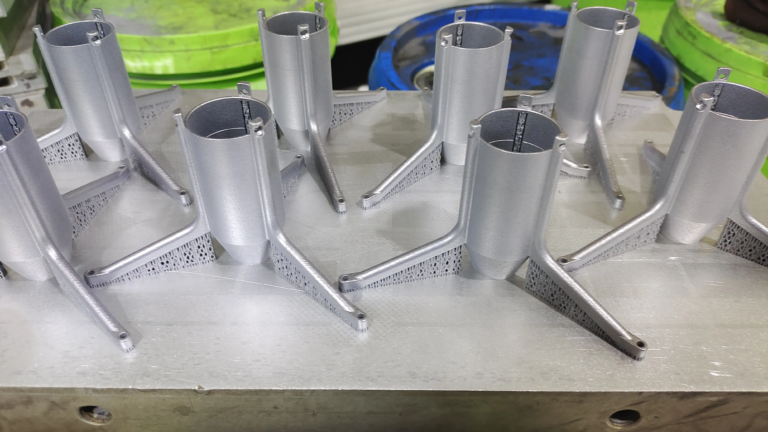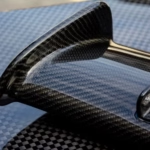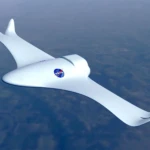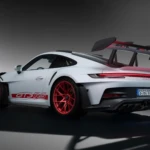Unlocking manufacturing excellence: the transformative capability of precision CNC milling solutions
In an unremitting pursuit of tighter tolerances, complex geometric shapes and growing efficiency, manufacturers across aerospace, medical, automotive and technology are turning to the cornerstone of modern manufacturing: Precision CNC milling. This complex minus manufacturing process powered by computer-controlled machinery has evolved beyond basic shaping and has become an essential tool for producing critical components with unparalleled accuracy and repeatability. At its peak, Five-axis CNC machining Provides the function to push possible boundaries, addressing complex manufacturing challenges that were once considered nearly impossible.
Beyond Simple Cutting: The Essence of Modern CNC Milling
Gone are the days when milling machines requiring ongoing manual intervention. Today’s computer numerical control (CNC) milling uses pre-programmed software to simultaneously determine the movement of precise cutting tools. This digital orchestration translates complex CAD (Computer Aided Design) models into physical reality.
From three axes to Five-axis CNC machining Represents a quantum leap. The 3-axis machine moves the cutting tool linearly along the X, Y and Z axes (left and right, front to back, up and down), and the five-axis machine adds two rotation axes. Usually, these are:
- A-axis: Rotating motion around the X-axis.
- C-axis: Rotating motion around the Z axis.
This multi-directional freedom allows cutting tools to approach the workpiece from almost any angle In a setting. This is revolutionary.
Why five-axis CNC milling is changing the game
The advantages of investing in high-precision five-axis milling solutions are far-reaching and directly affecting the bottom line and product quality:
- Complex geometry mastery: Production of complex parts with undercuts, deep cavity, organic curves (such as impellers or turbine blades) and expensive composite angles that are impossible or too high using traditional methods. Five-axis machines handle these shapes easily and gracefully.
- Efficiency of a single setting: Eliminates the need for multiple settings and expensive fixture changes. Complex parts can be fully processed on a single machine, greatly reducing lead time, minimizing human handling errors, and significantly improving dimensional consistency across the entire section. Less settings equal throughput and lower cost.
- Top surface finish: The ability to maintain optimal orientation between the cutting tool and the workpiece surface profile results in a smoother finish directly from the machine, reducing or even eliminating the need for a wide range of secondary finishes.
- Enhanced accuracy and tolerance: Minimizing artifact handling between settings greatly reduces the chances of benchmark movement and cumulative tolerance of errors. Five-axis machines maintain incredibly tight tolerances (usually reduced to microns, ±0.01mm or more) in complex functions. This accuracy is critical for mission-critical components such as aerospace actuators or medical implants.
- Optimized cutting strategy: Programmers can utilize more efficient tool paths, such as positioning tools that are perpendicular to the surface and cut perpendicular to the surface. This maximizes tool life, can safely cut parameters and improve chip evacuation, resulting in better process control and efficiency overall.
- Material versatility: High-end five-axis machines deal with a variety of challenging engineering materials: aircraft grade aluminum and titanium, hardened steel, Superallays (Inconel, Hastelloy), stainless steel, stainless steel, engineering plastics (PEEK, PTFE), PEEK, PTFE), copper alloys and more – turn difficult materials to precise components, to precise components.
Great Advantages: Your Companion Precision
exist GreatWe are not only operating machines; we design manufacturing solutions. As a professional high-end manufacturer Five-axis CNC machiningwe bring more tables to the table:
- The most advanced technology: Our facilities are equipped with the latest generation of accurate five-axis CNC machining centers that ensure the highest levels of accuracy, rigidity and speed.
- Process expertise: Our team includes highly skilled engineers, programmers and mechanics with deep domain knowledge. We not only know how to program and run the tool, but also how to optimize The whole process Complex manufacturing problems can be effectively solved for your specific material and design challenges.
- End-to-end capability: We offer more than processing. Greglight offers a comprehensive range of One-stop post-processing and completion service Customized to your exact requirements. This includes:
- Precision heat treatment (annealing, tempering, hardening)
- Professional surface treatment (anodized – type II and type III hard coating, slats, passivation)
- Precision painting, powder coating
- Exquisite laser marking and engraving
- Non-destructive testing (NDT) verification
- Precision assembly and kit
- Quick customization: Need a quick and complex prototype? Do you need to run a lot of complex parts? We’re good at Quick customization and processing Even the most demanding geometric shapes in a large number of materials. Our agility is our power.
- Reliability and trust: Built on principle Expertise, Authoritative and Trustworthy (EAT)Our strict quality control program (usually including CMM inspections) ensures that each section meets or exceeds your specifications, which is especially important for regulated industries such as aerospace and medical care.
Application of accurate five-axis luminescence
The versatility of advanced five-axis CNC milling makes countless applications essential:
- aerospace: Engine components (glitter, impeller, casing), structural fuselage parts, landing gear components, satellite hardware – requires extremely high accuracy and material performance.
- Medical: Complex surgical instruments, orthopedic implants (hip, knee, spinal components), diagnostic equipment parts – requires biocompatibility and microscopic level of accuracy.
- Cars and Motorsports: High-performance engine blocks and heads, transmission assembly, suspension arms, custom manifolds – requiring strength and lightweight design.
- Energy (oil and gas, turbine): Valve Body, Pump Impeller, Turbine Blade, Heat Exchanger Assembly – Handle extreme pressure, temperature and corrosive environments.
- Robots and automation: Articulated arms, complex joint components, sensor housing, lightweight structural frame – requiring precise movement and durability.
- Optical/Laser Technology: Precision installation, mirroring stage, complex housing – requires excellent stability and micro level positioning.
Conclusion: Improve manufacturing industry with strategic accuracy
Settling traditional machining can be an important limitation in a competitive landscape dominated by complex design requirements and uncompromising quality standards. Precision five-axis CNC millingespecially among expert partners like this Greatrepresents the peak of subtraction manufacturing capability.
It can unleash the freedom of design without limit, ensure the integrity of mission-critical components with unparalleled accuracy, and simplify production with excellent efficiency. Under one roof, the combination of advanced technology, deep understanding of materials science and comprehensive post-processing provides a powerful one-stop solution that translates directly into competitive advantage.
Don’t let manufacturing limitations limit your vision. Embrace the power and accuracy of advanced five-axis machining solutions to transform the most challenging designs into tangible, high-performance reality.
Ready to experience the Greatlime difference?
Contact us today to discuss your next precise machining project. Our team is ready to deliver high-quality, complex parts at competitive prices at competitive prices by time and exact specifications.
FAQs (FAQs) – Precision CNC Milling
Q1: What level can Greatlight’s five-axis CNC milling usually achieve?
one: For properly designed parts, we usually implement and maintain tolerances within ±0.01mm (±0.0004 inches). Based on partial geometry, dimensions, materials and inspection functions, tighter tolerances are possible. Early communication about your key tolerances is key.
Q2: What materials can you machine?
one: Our capabilities extend across a vast spectrum: Aluminum Alloys (incl. 6061, 7075), Titanium Alloys (incl. Ti-6Al-4V, CP Ti), Stainless Steels (303, 304, 316L, 17-4PH, etc.), Tool Steels, Brass, Copper, Plastics (PEEK, Delrin, PTFE, Polycarbonate), and exotic materials like Inconel, Hastelloy and Kovar. We select the best machining strategy for the unique properties of each material.
Question 3: What are the main advantages of five-axis milling over three-axis milling for complex parts?
one: Five-axis eliminates multiple settings (time/cost savings), allowing for a single breath of complex organic shapes, providing excellent finishes on the profile, improving accuracy by minimizing fixation errors, achieving more efficient toolpaths, and providing better access to deep pocket/weak place restrictions. Complexity becomes feasible and economical.
Question 4: How to optimize my CAD design for CNC milling?
one: The main considerations include:
- Minimize thin wall/deep pockets: Easily affected by vibration/sagging.
- Use of tracks: Avoid sharp inner corners (match end mill size).
- Standardized pore size: Minimize tool changes.
- Ensure access to the tool: Can this tool physically reach all areas?
- Define key features: Clearly determine tolerances and basic surfaces.
Our engineers are happy to provide designs for Manufacturing (DFM) feedback.
Q5: Which file format is required for reference and processing?
one: We prefer 3D CAD models in Steps (.STP), IGES (.igs), or Parasite (.x_t) formats for reference and programming. 2D drawings (.pdf, .dwg, .dxf) have key dimensions, tolerances, surface surfaces and material specifications, and are also critical to the complete definition.
Question 6: Can you handle prototypes and larger production runs?
one: Absolutely. Greglight has extensive rapid prototyping and experienced for design verification and mass production. Our flexible workflow and capacity allow seamless scaling from a single complex prototype to hundreds or thousands of parts.
Question 7: How long does a typical project take?
one: Advance time varies greatly based on partial complexity, quantity, material availability and required post-processing. A simple prototype might be a few days. A complex project that finishes can take several weeks. Contact your project details for accurate timeline estimation. We prioritize fast turnaround as much as possible.
Question 8: Why choose Greatlime instead of competitors?
one: We specialize in the most advanced Five-axis CNC machining And with deep technical expertise, comprehensive internal finishing, strict quality control and commitment to solving effective challenges in complex manufacturing industries. Our focus is to provide high-value precision through personalized services and competitive prices.

















